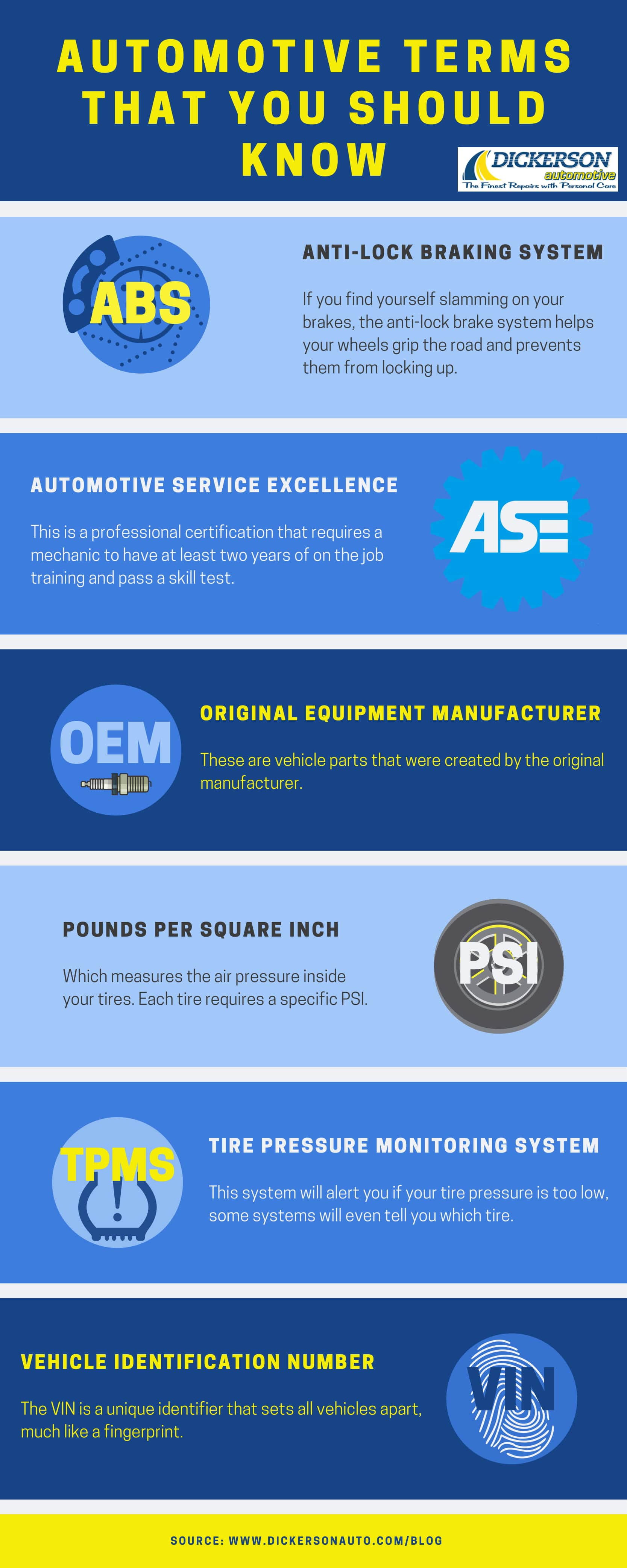Not everyone is a major car enthusiast; it’s easy to get lost in automotive jargon when speaking to a mechanic. It may even feel like they’re speaking an entirely different language altogether. It’s a good idea to familiarize yourself with the meanings of commonly used automotive terms to effectively communicate with your mechanic.
ABS – ABS is an abbreviation for the anti-lock braking system. If you find yourself slamming on your brakes, the anti-lock brake system helps your wheels grip the road and prevents them from locking up.
Aftermarket – These are automotive parts that aren’t made by the original manufacturer.
ASE – ASE is an abbreviation for Automotive Service Excellence. This is a professional certification that requires a mechanic to have at least two years of on the job training and pass a skill test.
Battery – This is the component under your hood that stores the electrical power needed to start your vehicle.
Coolant (Anti-freeze) – Coolant is a liquid that transfers heat throughout the engine to avoid damage caused by boiling or freezing temperatures.
Drivetrain – The drivetrain is all the components of your car that provide power to your car’s wheels.
Emissions - The United States Environmental Protection Agency or “EPA” has standards that describe the maximum amount of pollutants a vehicle can release to be considered safe for the environment.
Fuel Economy – A vehicle fuel economy describes how far it can travel based on the amount of fuel it consumes.
OEM – OEM is an abbreviation for Original Equipment manufacturer. These are vehicle parts that were created by the original manufacturer.
PSI – This is an abbreviation for pounds per square inch, which measures the air pressure inside your tires.
Pulling – Pulling is a description used for a vehicle steering wheel that gears left or right on its own, even though you’re attempting to drive straight.
Recall – A recall happens when a manufacturer or the National Highway Traffic Safety Administration determines that a specific car model has a safety defect that does not comply with federal safety standards.
Thermostat: The thermostat regulates engine temperature by controlling the speed that the coolant circulates through the engine.
Tire Pressure – This is how much air is inside a vehicle’s tires; your tire pressure is expressed through the PSI unit of measurement.
TPMS – This abbreviation stands for a tire pressure monitoring system; this will alert you if your tire pressure is too low.
VIN – This is an abbreviation for the vehicle identification number. The VIN is a unique identifier that sets all vehicles apart.
Water pump: The water pump is a component that circulates coolant through the radiator, heater, and engine.
This glossary includes a great list of terms that you should have on hand to understand specific aspects of your vehicle. It also helps to understand the most commonly used terms to communicate effectively with others. There may be other terms that are commonly used depending on your specific car make or model, but this is a great starting point.
